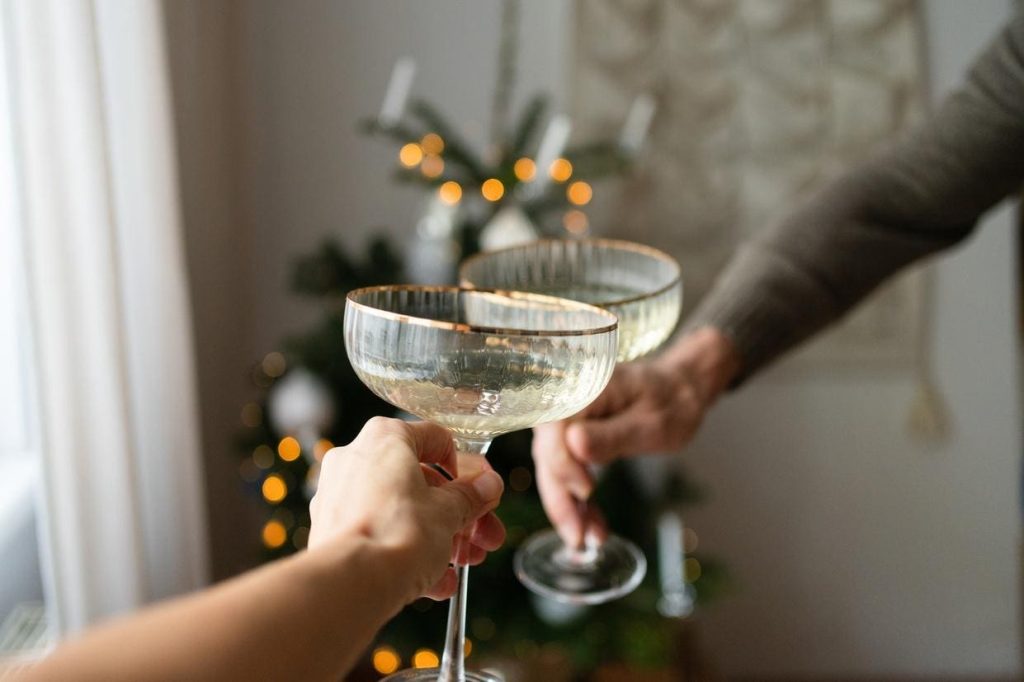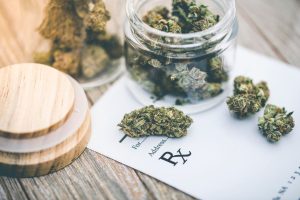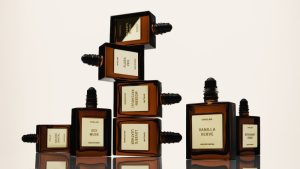Toast the holidays with Austrian wine, with bottles for gifting and entertaining at every price point.
getty
Wine is undoubtedly one of the most exceptional gifts to give and receive, according to Europe-based wine writer Bart De Vries. Not only is it a drink of sophistication and pleasure, but a bottle of Austrian wine is also an emblem of thoughtfulness and quality.
Unlike gifts that end up in the attic or clutter your living space, De Vries says that a well-chosen wine can be savored and shared, creating cherished memories without leaving a trace behind. “And after the wine is finished and the bottle is recycled, it leaves your house tidy and free of unnecessary knick-knacks that need to be schlepped around for too long,” says De Vries.
Why Choose Austrian Wines?
When selecting a wine to gift, Austria offers a treasure trove of options that promise extraordinary experiences. A Grüner Veltliner from the picturesque Wachau region serves as an ideal introduction to Austrian wines for newcomers. Wachau’s terraced vineyards yield wines of elegance and depth, showcasing Austria’s graceful winemaking prowess. But that’s just an ideal starting point.
Interesting Diversity
While Austria might be best known for its white wines, the rising temperatures have allowed red grapes in cool-climate areas like Austria to ripen more reliably. De Vries notes that this shift has led to more frequent good vintages.
He calls out Carnuntum, Leithaberg, and Eisenberg—regions celebrated for their robust reds, particularly those crafted from Blaufränkisch, which deliver a vibrant bouquet ready to complement any occasion.
“To get into the right mood and round it off in style, Austria is also a great source of refreshing sparklers (Sekt) and world-famous sweet wines,” says De Vries.
Austrian Wines & Environmental Responsibility
De Vries says that since the mid-eighties, Austria has prioritized quality over quantity, a move reflected in the relatively high percentage of organic and biodynamic wineries. In fact, the Austrian Wine Marketing Board reports that 40% of Austria’s vineyards are now cultivated using environmentally conscious practices and undergo official inspections.
“After years of hard work, it is now paying off,” says De Vries. “Austrian top wines can stand their ground in comparison with the world’s best at a reasonable price level.”
Winter views of vineyards in Austra’s stunning Wachau region.
© Austrian Wine / Fotostudio Semrad
Single Vineyard Stars with the Erste Lage Designation
Eager to impress? Look for a release from the renowned Erste Lage vineyards, an indicator symbolizing Premier Cru-level quality, a designation managed by Österreichische Traditionsweingüter (ÖTW). Delightful choices like the Heiligenstein vineyard in Kamptal and the Lamm vineyard in Langenlois/Kamptal stand as epitomes of excellence in Riesling and Grüner Veltliner, respectively, says De Vries.
Wine classifications have evolved distinctly across Europe’s wine regions, each shaped by unique structural influences. Bordeaux focuses on estates, Champagne on municipalities, and Burgundy on vineyards. This diversity reflects the rich heritage of European viticulture.
The Danube winegrowing traditions mirror this evolution. Vineyards here are often shared among multiple estates, with growers tending vines across various plots, sometimes managing just a few rows. This nuanced structure makes vineyard classification the most logical approach for the region.
The ÖTW has expertly recognized this by classifying Erste Lage vineyards, which consistently produce wines of remarkable character and distinctiveness. These vineyards represent their appellations at the highest level, with natural conditions that reliably yield exceptional wines each year.
Exploring the Offbeat Path with STK Wines
Venture beyond the typical and discover a Sauvignon Blanc from renowned STK wineries—twelve houses with distinct personalities and exceptional wines, which come together to showcase the essence of Steiermark and its finest vineyard sites, says De Vries.
Over 30 years ago, the STK was founded by a dedicated group of winegrowers in Austria, a region renowned for its winemaking challenges due to steep hills, unpredictable weather, and diverse soils. Austria has maintained a steadfast commitment to quality, resulting in a vibrant wine scene where sustainability, organic, and biodynamic practices thrive. STK wines exemplify this commitment to quality and innovation, crafted without reliance on chemicals.
Duernstein at winter time along the Danube River. Photo by Imagno/Getty Images
Getty Images
Austrian Wine Pro Gifting Tips
Gifting an Austrian wine instantly sparks conversation, according to Austrian wine expert and #GrünerGirl, Christina Zaeske. She says wrapping up an Austrian bottle is a trendy tip for curating quality wines at a great price.
“Yet, to simply buy the first $20 bottle of 2023 Grüner Veltliner from the middling shelf might not impress much beyond providing a funky-fresh experience that is drunk and forgotten before the evening starts,” she warns.
Instead, Zaeske recommends wines that offer a memorable, unparalleled experience, like vibey natural wines, sparkling Sekts, or nuanced reds. “The array of styles beyond the well-loved Grüner Veltliners makes Austrian wines so exhilarating today,” she says.
In the United States, shoppers may stumble upon vintages from two to seven years old. These include single-vineyard Rieslings that often come at competitive prices, making Austrian wines capable of exceeding expectations, says Zaeske.
In an exciting move, Austria became the first country outside of France in 2023 to establish legal grounds for the Grosse Lage (Grand Cru) system. Zaeske feels this revolutionary approach could transform Austria’s wine exports over the next two decades, with aged Rieslings from the stunning Wachau promising exquisite experiences, so look for these releases.
Zaeske’s Approach To Selecting Austrian Wines With Confidence
- Look for the red-white-red bandolier cap for guaranteed quality and origin.
- Seek labels marked with “Ried,” which signifies a single-vineyard release, sure to impress your peers.
- Snag excellent vintages such as 2016 for Sekt, 2017 for Riesling, 2019 for red wines, 2021 for Lower Austrian Grüners, 2022 and 2023 for orange wines and rosés.
- When uncertain, remember: “Grüner goes great!” Its versatility pairs beautifully with almost any dish.
Ried Oerloiben, Ried Klostersatz, and Ried Loibenberg in Austria’s Wachau region.
Austrain Wines
Recommended Austrian Wines: Picks from De Vries
Weingärtnerei Frischengruber | 2023 Ried Goldberg Riesling Smaragd
This winery is on the right bank of the Danube, in a cooler part of the Wachau between Spitz and Krems. Georg Frischengruber, a young, down-to-earth winemaker, creates high-quality, affordable wines here. Frischengruber describes himself as a “Riesling guy,” with the Goldberg vineyard being his favorite—De Vries agrees. “On the palate, it has radiant freshness with stonefruit and citrus, jazzed up with hints of mango and other tropical delights,” says De Vries. While drinkable now, the 2023 vintage may gain complexity with five years of cellaring. Buy now.
Grabenwerkstatt | 2018 Ried Trenning Riesling
Grabenwerkstatt is located in the cool Spitzergraben valley of the Wachau and is run by two young, ambitious vintners, says De Vries. He describes the estate’s Rieslings and Grüner Veltliners as linear, mineral, and long. “Trenning is the highest vineyard in the Wachau, but due to its southern exposure, it is just possible to ripen Riesling grapes here,” according to the wine writer. De Vries believes this wine is arguably Grabenwerkstatt’s most iconic and typical release. Buy now.
Grabenwerkstatt | 2019 Grabenwerk Grüner Veltliner
Made with grapes from the cool Spitzergraben, this wine is a great expression of the subregion of Wachau where Grabenwerkstatt is based. The Grabenwerkstatt team focuses on terroir through five single-vineyard wines, with Trenning being one of them. Buy now.
Wachter-Wiesler | 2020 Deutsch Schützen Blaufränkisch
Wachter-Wiesler is a family winery run by siblings Julia and Christoph Wachter in the village of Deutsch Schützen, located in the Eisenberg appellation, known for its iron-rich, schist soils. This appellation specializes in Blaufränkisch wines, and Wachter-Wiesler is considered by De Vries to be one of the region’s brightest stars. Certified organic, the siblings believe that healthy, lively soils are the key to growing perfect grapes for wines typical of their place. “Matured in large, mostly neutral oak barrels, their wines are among Austria’s best Blaufränkisch, combining drinkability with complexity,” says De Vries. Buy now.
Georg Prieler | Ried Marienthal Blaufränkisch
Prieler’s winery is based in the Leithaberg appellation, known for its pure white limestone soils, which De Vries believes provide an ideal environment for Blaufränkisch. He describes this wine as an “exquisite balancing act” between chalky minerality, fresh sour cherries, dark berry fruit, floral notes, and subtly aromatic dried herbs. The cool, silky tannins give the wine a pleasant, refined, grippy mouthfeel. Buy now.
Sattlerhof | 2021 Gamlitz Sauvignon Blanc
Sattlerhof is a member of the Respekt group, which consists of a small number of wineries in Austria, Germany, and Italy that adhere to biodynamic farming and low intervention in the cellar. “Sattlerhof’s wines have an ethereal quality that transcends any stereotypical idea of Sauvignon Blanc, Steiermark’s hallmark variety,” says De Vries. He calls them lean, brilliant, unadulterated, and heavenly. Buy now.
Tement | 2020 or 2021 Zieregg Sauvignon Blanc
This iconic wine may be a splurge, but for a special occasion, it’s worth it. “Zieregg is among Austria’s top vineyards, truly a Grand Cru, and Tement is its glorious vinous interpreter,” says De Vries. He notes that this wine impresses with its full-bodied concentration, featuring a linear yet rounded lemony acidity. Tropical fruit and gooseberries emerge, complemented by vibrant stony minerality and a slightly chalky texture. The overall harmony of flavors leads to a long, fresh, and structured finish. De Vries advises letting this wine mature. Buy now.
“Austrian top wines can stand their ground in comparison with the world’s best at a reasonable price level.”
Recommended Wines: Zaeske’s Picks
Weingut Johann Donabaum | 2017 Ried Offenberg Riesling Smaragd
The Offenberg vineyard, a south-facing site in the cool and windy Spitzer Graben, not only lends a minerality that reflects the steep, thinly top-soiled terraces, but also tells the story of millennia of history in this valley: the original course of the Danube River. “This Riesling is an eruption of terroir in the glass,” says Zaeske. “Its true prime is now.” She highlights notes of peaches and nectarines, which shine with vibrant acidity, complemented by a buttery, silky texture and a hint of salt. Zaeske calls it “liquid gold,” a perfect niche gift from the Wachau’s only Großlage, or collective vineyard site, with a unique climate in the region. Buy now.
Weingut Tegernseerhof | 2021 Ried Kellerberg Riesling Smaragd
Having tasted this Riesling Cru from Martin Mittelbach in multiple verticals dating back to 2005, Zaeske says that Ried Kellerberg is a strong candidate for Grosse Lage (Grand Cru) classification when the time comes. Until then, the 2021 vintage proves to be an exceptional year for the region and for Tegernseerhof. Zaeske describes this bottle as offering tropical notes, ripe peach, and biting, racy acidity. Let this wine age, and it will transport you to the dry-stone terraces where the vines thrive, softening into a smoother, more elegant version of its lively, youthful character. “A definite wow for the loved one who likes famous vineyards from not-yet-crazily-famous wineries,” says #GrünerGirl. Buy now.
Weingut Josef Jamek | 2022 Ried Klaus Riesling Federspiel
A still-young vintage, the filigree of Weingut Jamek’s style is only available for a short time in the United States. Zaeske calls this a “buy now, drink later piece of (tasty) jewelry for the wine nerd with a few prestigious bottles already in their cellar.” She adds that drinkers who love FX Pichler and Hirtzberger must get to know Jamek. From Ried Klaus, a vineyard first documented in 1437, there’s a distinct giveaway to its terroir: the aromas of meadow herbs, wildflowers, citrus zest, white peach, and delicate stone fruits. “Elegance at its finest,” says #GrünerGirl. Buy now.
Weingut Schwarz | 2020 The Butcher Blaufränkisch
“The label is wild. The winemaker is wild. The wine… is wild!” says Zaeske. This biodynamic and vegan-friendly wine is perfect for holiday meats, especially turkey. The sharp acidity and swift tannin draw are led by notes of dark cherry, brambled berries, stewed holiday plum, and tart currant, all infused with the richness of French oak. Zaeske adds that this bottle will transport the drinker “directly into the moody forests of old Europe, hunting for wild game for your Yule-time feast, toes damp in soft-leather boots sinking into the blanket of forest leaves.” Buy now.
Bonus Gift Idea: Glassware
For an upgraded Austrian wine drinking experience, consider the Veloce Tasting Set from Riedel, the Austrian glassware brand with nearly 300 years of heritage. At $178, the Riedel Veloce Tasting Set includes four crystal glasses, each tailored for a specific wine: Cabernet, Pinot Noir, Sauvignon Blanc, and Chardonnay. Made from clear crystal, the glasses are dishwasher-safe, combining elegance with everyday usability. For smaller purchases, the Riedel Veloce glasses are also available in sets of two for $89. Buy now.
MORE FROM FORBES
Source: https://www.forbes.com/






More Stories
Denmark’s Medical Cannabis Trial Program Set To Become Permanent
Spied On By Surveillance States, Dissident Artists Are Turning The Tables
10 Best Ski And Snowboard Resorts To Use Your Epic Pass This Winter